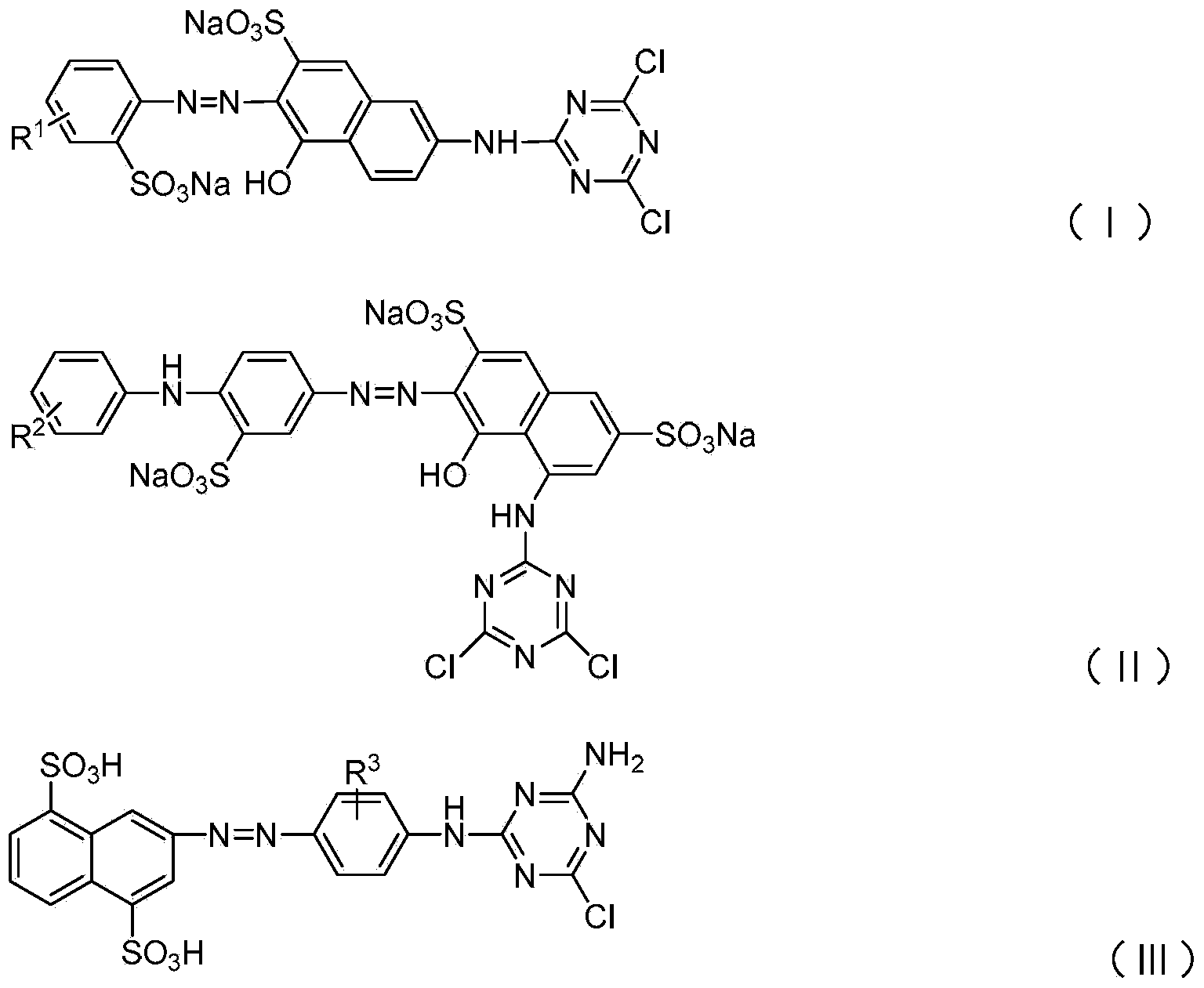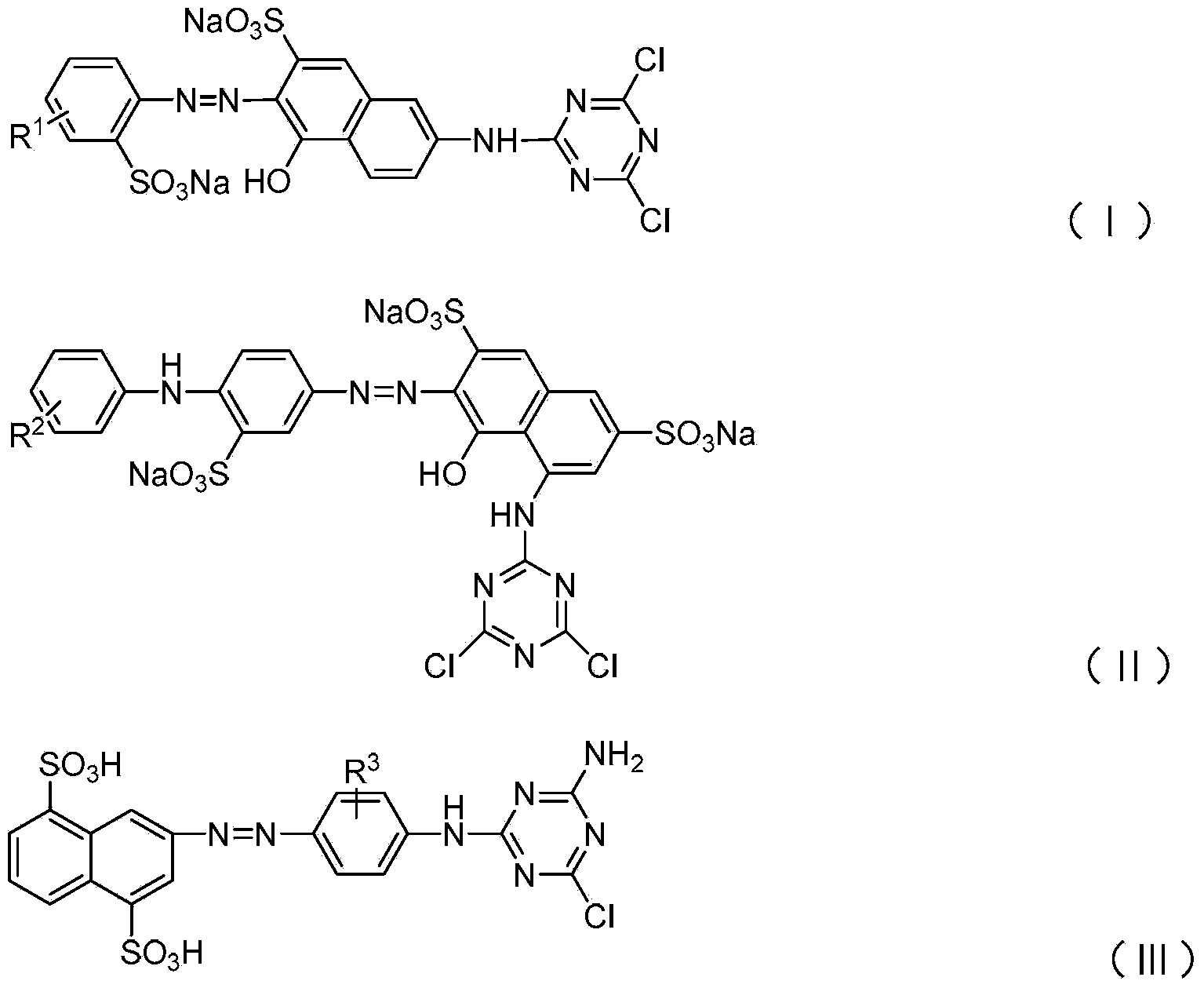Anti-staining dyeing process for nylon-cotton blended fabric
A blended fabric and anti-staining technology, applied in the field of anti-staining dyeing process, can solve the problems of uneven two-phase pulling, different degrees of brocade, and reversed color, so as to improve dyeability, reduce bonding, and reduce contamination. the effect of the probability of
- Summary
- Abstract
- Description
- Claims
- Application Information
AI Technical Summary
Problems solved by technology
Method used
Image
Examples
Embodiment 1
[0034] Heat 100g of nylon-cotton blended fabric at 90°C for 10 minutes for pretreatment, then add 1000g of water, 3g of C.I. reactive red 8, and 0.4g of potassium octadecanoate soap after cooling, control the temperature at 25°C, and keep it warm for 10 minutes , then add sodium sulfate and keep warm for 10 minutes, then heat up to 80°C at a rate of 1°C / min, then keep warm at 80°C for 30 minutes, add 20g of soda ash, and keep warm for 30 minutes; after the heat preservation is completed, drain the residual liquid , wash with cold water at 0-5°C for 10 minutes, heat up to 98°C for soaping for 10 minutes, drain the residue, wash with cold water at 0-5°C, adjust the pH to 5.0 with glacial acetic acid, and then rinse with cold water at 0-5°C Wash for 10 minutes and dry to obtain the dyed finished product. The brocade staining reaches grade 5. The test method adopts the national standard GB251-2008-T gray sample card for staining.
Embodiment 2
[0036] Heat 100g of nylon-cotton blended fabric at 90°C for 10 minutes for pretreatment, then add 1000g of water, 3g of C.I. active red 8, and 0.4g of pull-off powder BX after cooling, control the temperature at 25°C, and keep it warm for 10 minutes. After adding sodium sulfite and keeping it warm for 10 minutes, heat it up to 80°C at a rate of 1°C / min, then keep it warm at 80°C for 30 minutes, add 20g of soda ash, and keep it warm for 30 minutes; after the heat preservation is completed, drain the residual liquid, Wash with cold water at 0-5°C for 10 minutes, heat up to 98°C for soaping for 10 minutes, drain the residue, wash with cold water at 0-5°C, adjust the pH to 5.0 with glacial acetic acid, and wash with cold water at 0-5°C After drying for 10 minutes, the dyed finished product is obtained, and its brocade reaches 4 grades.
Embodiment 3
[0038] Heat 100g of nylon-cotton blended fabric at 90°C for 10 minutes for pretreatment, then add 1000g of water, 3g of C.I. active yellow 3, and 0.4g of sodium tetradecenyl sulfonate after cooling, keep warm for 10 minutes, and then add elemental After keeping the powder warm for 10 minutes, raise the temperature to 80°C at a rate of 1°C / min, then keep it at 80°C for 30 minutes, add 20g of soda ash, and keep it warm for 30 minutes; Wash in cold water at 5°C for 10 minutes, heat up to 98°C for soaping for 10 minutes, drain the residue, wash with cold water at 0-5°C, adjust the pH to 5.0 with glacial acetic acid, and wash with cold water at 0-5°C for 10 minutes. Dried to obtain dyed finished products, the brocade reached 5 grades.
PUM
 Login to View More
Login to View More Abstract
Description
Claims
Application Information
 Login to View More
Login to View More - R&D
- Intellectual Property
- Life Sciences
- Materials
- Tech Scout
- Unparalleled Data Quality
- Higher Quality Content
- 60% Fewer Hallucinations
Browse by: Latest US Patents, China's latest patents, Technical Efficacy Thesaurus, Application Domain, Technology Topic, Popular Technical Reports.
© 2025 PatSnap. All rights reserved.Legal|Privacy policy|Modern Slavery Act Transparency Statement|Sitemap|About US| Contact US: help@patsnap.com



